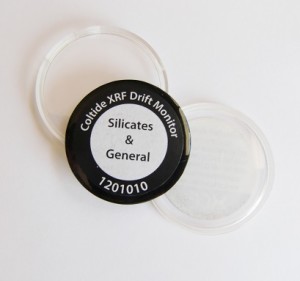Spectrometer Calibrations from XRF Scientific
XRF spectrometer calibrations are crucial processes to maintain an instrument’s highly discerning levels of precision. The x-ray output in an XRF spectrometer is initially calibrated to minute degrees, ensuring the acquisition of precise optical results by a fluorescence detector. However, x-ray output tubes are subject to low levels of drifting that can severely impact the accuracy of results over time. Regular spectrometer calibrations are necessary to correct x-ray tube drifting and maintain precise measurement parameters.
There are multiple support methods for spectrometer calibrations available from XRF Scientific, including:
- Alignment procedures;
- On-site procedure validation;
- Spectrometer stability testing;
- Sample preparation repeatability testing;
- Statistical quality control.
These spectrometer calibrations require expert support from XRF spectrometry professionals, and can bring results back in-line with an instrument’s pre-determined specifications. Yet there are simpler, less invasive methodologies for ensuring XRF equipment operates to discriminating degrees of accuracy for simultaneous experiments over extended periods.
XRF Drift Monitors for Spectrometer Calibrations

XRF Drift Monitors are fortified glass discs of distinct elemental compositions and sizes to suit all XRF spectrometers. Roughly 4 mm thick with little surface variation, these monitors can be easily loaded into a spectrometer for test performances designed to assess and correct the levels of drift exhibited by an x-ray tube.
Drift Monitors can be used to limit the requirement of spectrometer calibrations by monitoring and correcting minute mechanical variations in results or efficiency. These discs require excellent long-term stability to reduce the frequency of spectrometer calibrations and improve laboratory throughput for varying applications. This functionality is enabled because Drift Monitors do not vary over time, so monitored intensity variances are exclusively indicative of either instrumentation changes or environmental factors. Decreased fluorescent intensity typically suggests that spectrometer calibrations may be necessary.
These discs are produced using high-purity raw materials and low lithium metaborate or lithium tetraborate fusion flux contents to improve the length of component service lives. It is advisable to run a Drift Monitor within a spectrometer regularly to reduce the likelihood of future calibrations and to maintain experiment accuracy and repeatability.
Spectrometer Calibrations from XRF Scientific
XRF Scientific is a leading supplier of XRF solutions and equipment, with an expert understanding of x-ray fluorescent processes for numerous experiments. All our fusion equipment is provided with ongoing product support, including detailed advice regarding spectrometer calibrations and additional accessories to maintain instrument accuracy.
We produce a range of Drift Monitors under the AUSMON range, comprising multiple silicates and trace elements that exhibit very low variance in count rates over time. These components are ideal for avoiding disruptive spectrometer calibrations by maintaining instrument precision on a regular basis.
If you would like any more information about performing spectrometer calibrations with XRF products, please do not hesitate to contact us.









